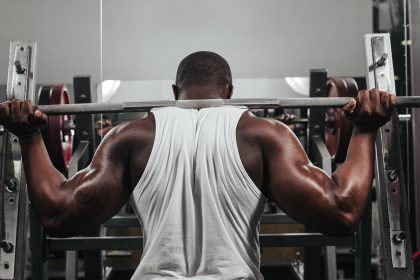The familiar pins and needles sensation in your legs after exercise might seem harmless, yet understanding its origins proves crucial for maintaining optimal fitness. Post-workout tingling affects numerous athletes and fitness enthusiasts, ranging from casual gym-goers to dedicated marathoners. While occasional tingling sensations might not raise immediate concern, recognizing patterns and potential underlying causes can significantly impact your athletic performance and overall health.
The science behind exercise-induced tingling
Your body undergoes significant changes during physical activity, triggering various physiological responses. Blood flow increases dramatically to support working muscles, while nerve endings become more sensitive to accommodate these adjustments. This natural adaptation sometimes manifests as tingling sensations, particularly in the legs.
The complexity of human anatomy means multiple systems interact during exercise. Your cardiovascular system pumps additional blood to working muscles, your nervous system heightens sensitivity to movement and position, and your endocrine system releases various hormones to regulate these responses. Understanding these intricate relationships helps explain why tingling sensations might occur during or after physical activity.
Primary causes of leg tingling
The histamine effect occurs when your body releases this chemical to enhance circulation during exercise, creating sensations similar to allergic reactions. Many athletes report this feeling spreading across their legs and sometimes to other body parts during intense workouts. Research suggests this response might intensify in people with higher sensitivity to histamine or those engaging in particularly strenuous activities. Regular exercise can help moderate this response over time, though some individuals might continue experiencing these sensations throughout their fitness journey.
Circulation challenges arise from multiple factors, including constrictive clothing and footwear. Blood flow restrictions during exercise can create temporary tingling sensations. More concerning conditions like peripheral artery disease may also manifest through similar symptoms. Understanding proper workout attire becomes essential, as even seemingly minor restrictions in clothing can significantly impact blood flow during exercise. Athletes should pay particular attention to compression gear, ensuring it provides support without limiting circulation.
Electrolyte fluctuations impact muscle function significantly. Intense workouts often lead to sweating and potential electrolyte imbalances, particularly affecting sodium, potassium, and calcium levels. These changes can trigger unusual sensations in your legs. Long-duration exercises or activities in hot environments increase the risk of electrolyte disturbances. Proper hydration strategies, including appropriate electrolyte replacement, become crucial for preventing these imbalances and their associated symptoms.
Medical conditions associated with exercise tingling
Nerve compression problems often manifest during physical activity. Conditions like spinal stenosis or peripheral neuropathy may cause tingling sensations in your legs that worsen with exercise. These conditions require careful management and might necessitate modifications to your workout routine. Working with healthcare providers and fitness professionals can help develop appropriate exercise adaptations while maintaining physical activity levels.
Spinal issues, including herniated discs and sacroiliac joint injuries, frequently cause one-sided leg tingling. These conditions require proper medical evaluation and appropriate treatment plans. The impact of spinal problems on exercise capability varies significantly among individuals. Some people might need temporary activity modifications, while others may require long-term adjustments to their fitness routines. Regular core strengthening and proper posture maintenance can help prevent some spinal issues.
Neuromas develop when nerves become inflamed, particularly in the feet. Morton’s neuroma commonly affects runners and can cause shooting sensations up the leg. The condition often results from repetitive pressure or irritation of nerves between the toes. Proper footwear selection and attention to running form can help prevent neuroma development. Some athletes benefit from custom orthotics or specific shoe modifications to address this condition.
Compartment syndrome, though rare, affects athletes engaging in repetitive movements. This condition develops when muscle fascia becomes overly tight, leading to circulation problems and tingling sensations. Athletes involved in high-impact activities face increased risk of developing this condition. Early recognition and appropriate medical intervention can prevent serious complications associated with compartment syndrome.
Prevention and management strategies
Understanding proper workout attire proves essential in preventing exercise-induced tingling. Loose-fitting clothes and properly sized shoes allow optimal blood flow to your legs during physical activity. Maintaining adequate hydration helps prevent electrolyte imbalances that might trigger tingling sensations.
Regular stretching and proper warm-up routines help prepare your muscles and nerves for exercise. incorporating recovery techniques such as massage and alternating temperature therapy can help minimize post-workout tingling. Creating a balanced approach to exercise intensity and duration helps prevent overexertion-related symptoms.
Proper nutrition plays a vital role in preventing exercise-related tingling. Adequate intake of essential minerals and vitamins supports nerve function and muscle health. Some athletes might benefit from specific supplementation strategies, though these should always be discussed with healthcare providers.
When medical intervention becomes necessary
Persistent tingling lasting beyond an hour after exercise warrants medical attention. Additional warning signs include accompanying weakness, unexpected pain, or changes in bodily functions. Regular tingling episodes occurring after minimal physical effort might indicate underlying health concerns requiring professional evaluation.
Medical professionals can perform various diagnostic tests to identify potential causes of exercise-induced tingling. These might include nerve conduction studies, imaging tests, or blood work to evaluate electrolyte levels and other relevant markers. Early intervention often leads to better outcomes and faster return to normal activity levels.
Long-term prevention approaches
Creating a balanced exercise routine helps prevent overuse injuries that might lead to tingling sensations. Understanding your body’s limits and gradually increasing workout intensity reduces the risk of exercise-related complications. Regular assessment of exercise gear, particularly shoes and compression clothing, ensures proper fit and function.
Maintaining good overall health contributes significantly to preventing exercise-induced tingling. Regular sleep patterns, stress management, and proper nutrition support your body’s ability to handle physical activity without developing uncomfortable symptoms. Building a strong foundation of general fitness before pursuing more intense activities helps reduce the risk of exercise-related problems.
Working with qualified fitness professionals can help develop appropriate exercise progressions that minimize the risk of tingling and other exercise-related symptoms. These experts can provide guidance on proper form, equipment selection, and workout intensity management.
















